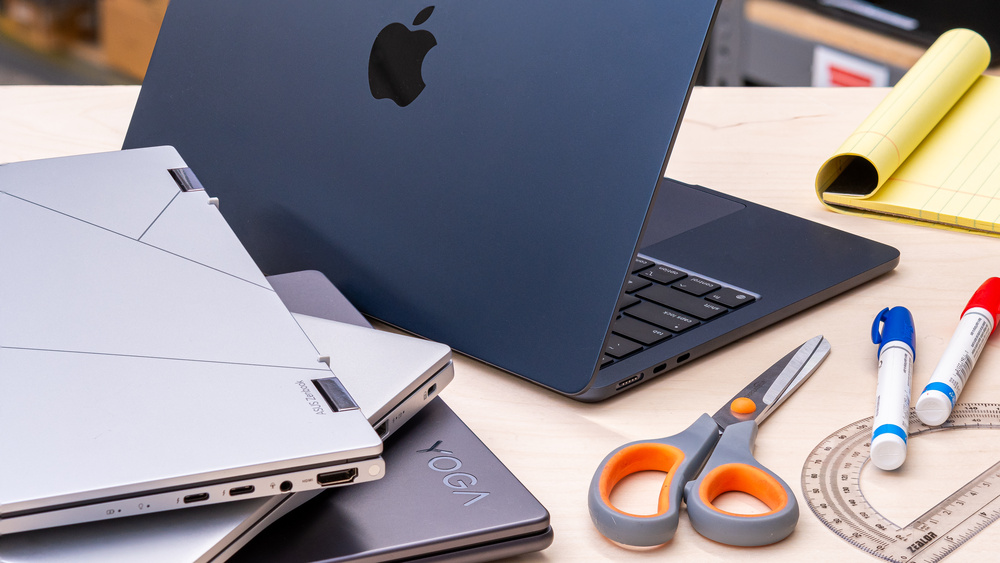In today’s digital age, having access to a laptop is essential for students to succeed in their studies. From online classes and research to completing assignments and projects, a reliable computer is a crucial tool for academic success. However, not all students can afford to buy one, which is why many governments, nonprofits, and private organizations have launched initiatives to provide free laptops for students in need.
If you’re a student or parent wondering how to get a free laptop in 2024, this guide will walk you through the various ways to access these opportunities. We’ll explore government schemes, nonprofit organizations, and educational programs that aim to bridge the digital divide by offering free or subsidized laptops to students.
Why Are Free Laptops Important for Students?
Access to a laptop can make a significant difference in a student’s educational journey. Here are some key reasons why laptops are important for students:
- Online Learning: With the rise of digital classrooms and online courses, having a laptop is essential for attending virtual lectures, accessing course materials, and participating in interactive discussions.
- Research and Assignments: A laptop allows students to conduct research, write papers, create presentations, and complete homework assignments efficiently.
- Skill Development: Using a laptop helps students develop digital literacy and technical skills, which are crucial in today’s tech-driven world.
- Equal Opportunity: Providing free laptops to students from low-income families ensures that all students, regardless of their financial background, have access to the same educational tools.
Let’s dive into how students can get a free laptop in 2024 through various resources.
Government Programs Offering Free Laptops for Students in 2024
Many governments around the world have recognized the importance of digital access for students and have introduced laptop distribution programs. These initiatives aim to provide students with the tools they need to succeed academically, especially in low-income or rural areas where technology access may be limited.
1. National Digital Literacy Mission (India)
India’s National Digital Literacy Mission (NDLM) aims to equip students with digital tools and technology by providing free laptops to deserving students. This government initiative is part of a broader plan to promote digital inclusion across the country. The program often targets students from economically disadvantaged backgrounds.
- Eligibility: Students in rural areas, low-income families, and specific educational institutions may qualify.
- How to Apply: Students or their guardians should keep an eye on government announcements and apply through designated portals or educational institutions when the scheme opens.
2. Free Laptop Schemes by State Governments (India)
Several Indian state governments have introduced free laptop schemes for students who excel academically or come from financially weaker sections of society. For example:
- Tamil Nadu Free Laptop Scheme: Tamil Nadu’s government provides free laptops to students who have passed the 10th or 12th standard in government schools.
- Uttar Pradesh Free Laptop Yojana: The Uttar Pradesh government has launched a scheme to provide laptops to meritorious students.
- Eligibility: The criteria may vary by state, but these programs generally target students who have scored well in board exams or come from disadvantaged communities.
- How to Apply: Applications are usually made through the official state government websites or through schools.
3. Digital Learning Schemes in the United States
In the U.S., several federal and state-level programs are designed to provide technology access to students, especially those from low-income households. For example, the Federal Communications Commission (FCC) introduced the Emergency Connectivity Fund (ECF) during the pandemic to ensure students had access to devices like laptops and internet services for remote learning.
- Eligibility: Students from families receiving federal assistance (like SNAP or Medicaid) or attending Title I schools may qualify.
- How to Apply: Schools often act as intermediaries, distributing laptops to eligible students. Check with your school or district about available programs.
4. ConnectHomeUSA (U.S.)
The ConnectHomeUSA initiative, in partnership with HUD (Housing and Urban Development), is aimed at providing digital resources, including free laptops, to students from families living in public housing.
- Eligibility: Low-income students, particularly those living in HUD-assisted housing, are prioritized.
- How to Apply: Contact your local HUD office or housing authority to inquire about this program.
Nonprofit Organizations Offering Free Laptops for Students
Several nonprofit organizations around the world are dedicated to helping students access laptops and other essential technology. These organizations often collect donations, refurbish devices, and redistribute them to students in need.
1. Computers for Students
Computers for Students is a U.S.-based nonprofit that provides refurbished laptops to students from low-income families. The organization works closely with schools, community centers, and other nonprofit organizations to identify students who need computers.
- Eligibility: Students from low-income families or those attending underfunded schools are typically eligible.
- How to Apply: Applications are usually submitted through schools or directly on the organization’s website.
2. One Laptop Per Child (OLPC)
One Laptop Per Child (OLPC) is a global nonprofit initiative that provides affordable and durable laptops to children, particularly in developing countries. While the program primarily targets younger children in remote or impoverished areas, it has also distributed laptops to older students.
- Eligibility: The program is focused on students in developing countries with limited access to educational resources.
- How to Apply: OLPC works with governments and local organizations, so applications are usually coordinated through those channels.
3. PCs for People
PCs for People is another nonprofit that provides refurbished computers, including laptops, to low-income students and families. The organization also offers affordable internet service to help students stay connected.
- Eligibility: Students and families earning less than 200% of the federal poverty level or receiving government assistance.
- How to Apply: Students can apply through the PCs for People website by providing proof of income or participation in an assistance program.
4. The On It Foundation
The On It Foundation (Opportunities Necessary to Increase Technology) provides free computers and internet access to underprivileged students in the U.S. The foundation works to help bridge the digital divide, ensuring that every student has the tools needed for success.
- Eligibility: Students must be enrolled in a U.S. public school and qualify for free or reduced-price lunch programs.
- How to Apply: Parents or guardians can apply by submitting a request letter with proof of eligibility to The On It Foundation’s official website.
Educational Initiatives and Corporate Sponsorship Programs
In addition to government and nonprofit programs, some companies and educational institutions run sponsorship programs that provide free laptops to students. Many of these programs are designed to promote education and digital literacy.
1. Dell Scholars Program
The Dell Scholars Program, run by the Michael & Susan Dell Foundation, provides not only financial aid for college students but also a free laptop to selected scholars. This program is aimed at helping low-income and first-generation college students succeed.
- Eligibility: High school students entering college with financial need who are participating in a college readiness program.
- How to Apply: Applications are accepted online through the Dell Scholars Program website.
2. Google Chromebook Program
Google has been involved in several initiatives to provide Chromebooks to students in need. This has often been done in partnership with schools, especially during the COVID-19 pandemic, when the demand for online learning tools skyrocketed.
- Eligibility: Students attending schools that participate in Google’s educational partnerships or digital learning initiatives.
- How to Apply: Chromebooks are usually distributed through participating schools or educational programs. Check with your school for eligibility.
3. Local Business and Corporate Sponsorships
Many local businesses and corporations offer sponsorships or partner with schools to donate laptops. Large tech companies, like Microsoft, Apple, and HP, also run initiatives from time to time to provide free or subsidized devices to students.
- Eligibility: It depends on the specific sponsorship or program, but typically, these initiatives target students from underserved communities.
- How to Apply: Reach out to your local school district or community centers to inquire about any ongoing corporate sponsorship programs.
Crowdfunding and Donation-Based Options
If you don’t qualify for a free laptop through government or nonprofit programs, you can explore crowdfunding platforms and donation-based programs. Many students have successfully used these methods to raise funds or receive donations for a laptop.
1. GoFundMe
GoFundMe is a popular crowdfunding platform where individuals can set up campaigns to raise funds for personal causes, including educational needs like purchasing a laptop. Many students have used GoFundMe to collect donations from friends, family, and even strangers who want to help support their education.
- How to Use: Create a GoFundMe campaign explaining why you need a laptop for school, share your story, and promote it on social media to gather support.
2. Local Donations and Community Support
Local organizations, community groups, and even individuals often donate laptops to students in need. You can reach out to local community centers, religious organizations, or neighborhood groups to ask if they know of anyone donating used laptops or running local laptop donation drives.
- How to Access: Post on local social media groups (such as Facebook community groups) or check with local charities that may collect used electronics for donation.
FAQs
1. Are there any government programs that give free laptops to students in 2024?
Ans – Yes, many governments, including state and national governments in India and the U.S., run programs that provide free laptops to eligible students. These programs often target students from low-income families or those who excel academically.
2. Can college students apply for free laptops?
Ans – Yes, many programs, including the Dell Scholars Program, provide free laptops to college students, particularly those from low-income backgrounds or first-generation college students.
3. Can I get a free laptop if I don’t qualify for government assistance?
Ans – If you don’t qualify for government assistance, you can explore nonprofit organizations, corporate sponsorships, or crowdfunding platforms like GoFundMe to raise funds for a laptop.
4. What should I do if my school doesn’t offer free laptops?
Ans – If your school doesn’t offer free laptops, consider applying through nonprofit organizations, checking local donation programs, or contacting community groups for support.
5. Are refurbished laptops safe for students to use?
Ans – Yes, refurbished laptops provided by reputable nonprofits and organizations are safe to use. These laptops are often tested, cleaned, and updated to ensure they are in good working condition.
Conclusion
Access to a laptop is essential for students in 2024, especially as online learning continues to play a significant role in education. Whether through government programs, nonprofit organizations, corporate sponsorships, or crowdfunding efforts, there are numerous ways for students to obtain a free laptop.
By exploring the options outlined in this guide, you can find the right path to getting the technology you need to succeed in your studies. Don’t hesitate to reach out to schools, community organizations, or local nonprofits for additional resources and support.



